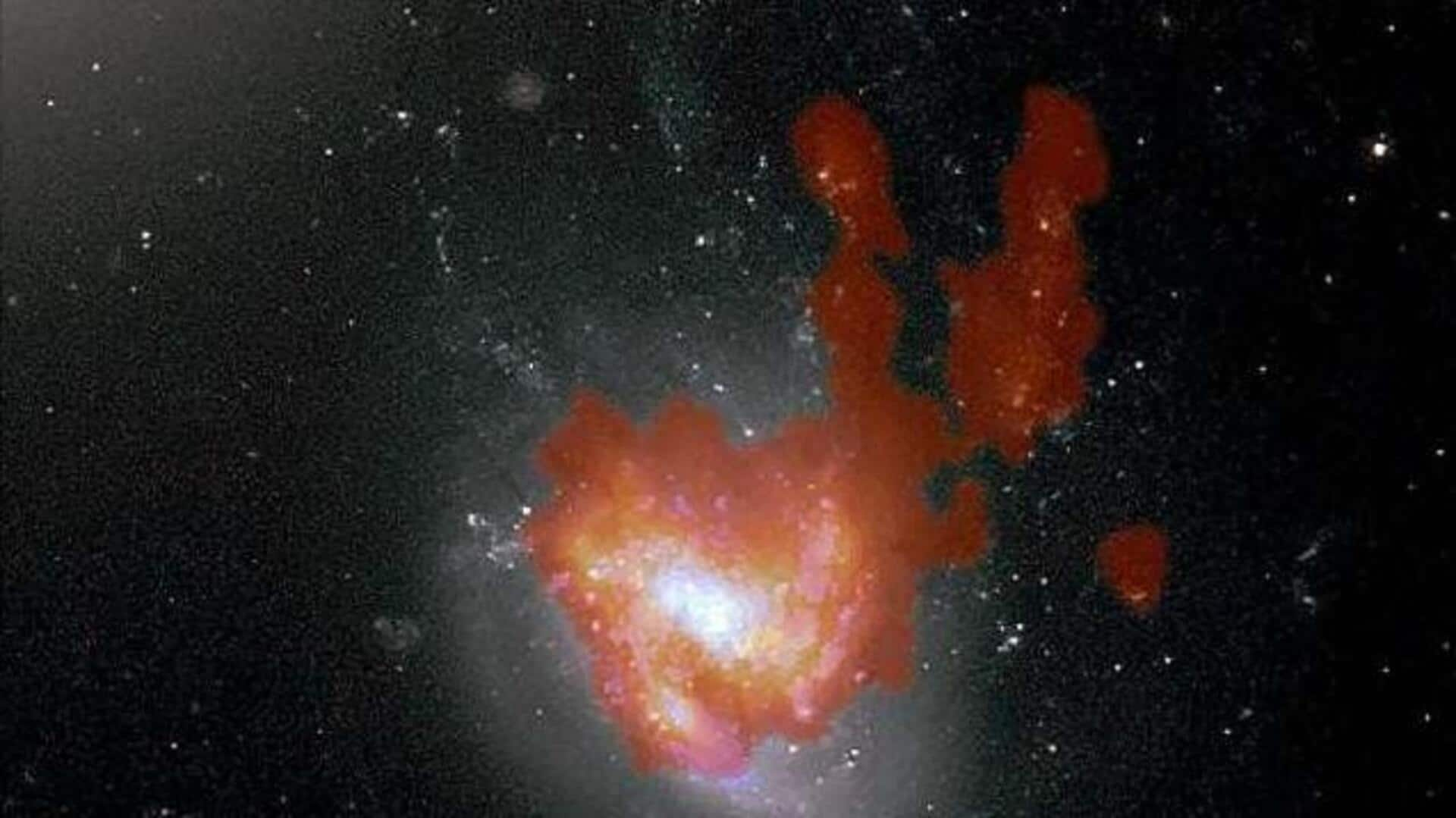
Why this galaxy 300M light-years away looks like a jellyfish
What's the story
A team of astronomers has mapped the unusual shape and internal workings of a "jellyfish" galaxy, NGC 4858. The study was led by Yale University's Harrison Souchereau and Jeffrey Kenney. The galaxy is located in the Coma cluster, over 300 million light-years away from Earth. The researchers used high-resolution pictures from an ALMA radio telescope survey to understand the dynamics within this extreme environment.
Cosmic giants
What are jellyfish galaxies?
Galaxy clusters are among the biggest structures in the universe, made up of hot gas, dark matter, as well as hundreds or even thousands of galaxies. As an individual galaxy moves through a cluster, extreme outside pressure strips away a portion of its interior gas. This process narrows and elongates the galaxy, giving it a "jellyfish" look with long trails of gas and young stars resembling jellyfish tendrils.
Wind tunnel
The galaxy is racing through the Coma cluster
NGC 4858 is racing through the Coma cluster at high speed, making it look like it's in a wind tunnel where its gas is being stripped away. The researchers found that the strong pressure created distorted spiral arm features within the galaxy that look like bunny ears. This phenomenon is possibly due to a combination of wind pushing on the gas and the rotation of the galaxy.
Galactic fountain
Evidence of fallback observed for the 1st time
The researchers also found evidence of a phenomenon known as "fallback," where gas has been pushed out of the galaxy disk but later falls back toward it. This was observed clearly and unambiguously for the first time in this study. Souchereau explained that while ram pressure stripping is usually seen as removing gas from galaxies, sometimes it can be pushed out but not stripped, creating a kind of galactic fountain when it falls back.